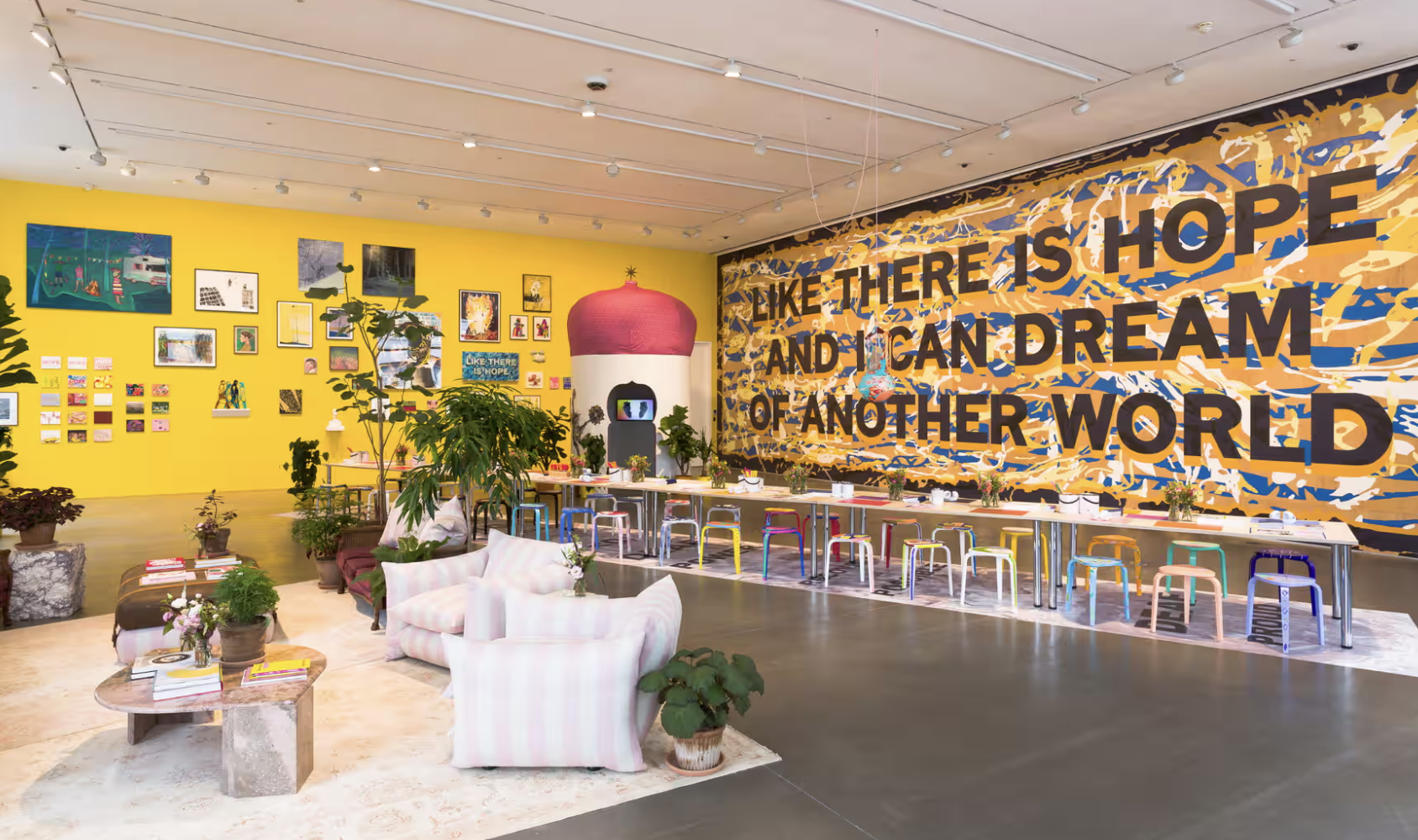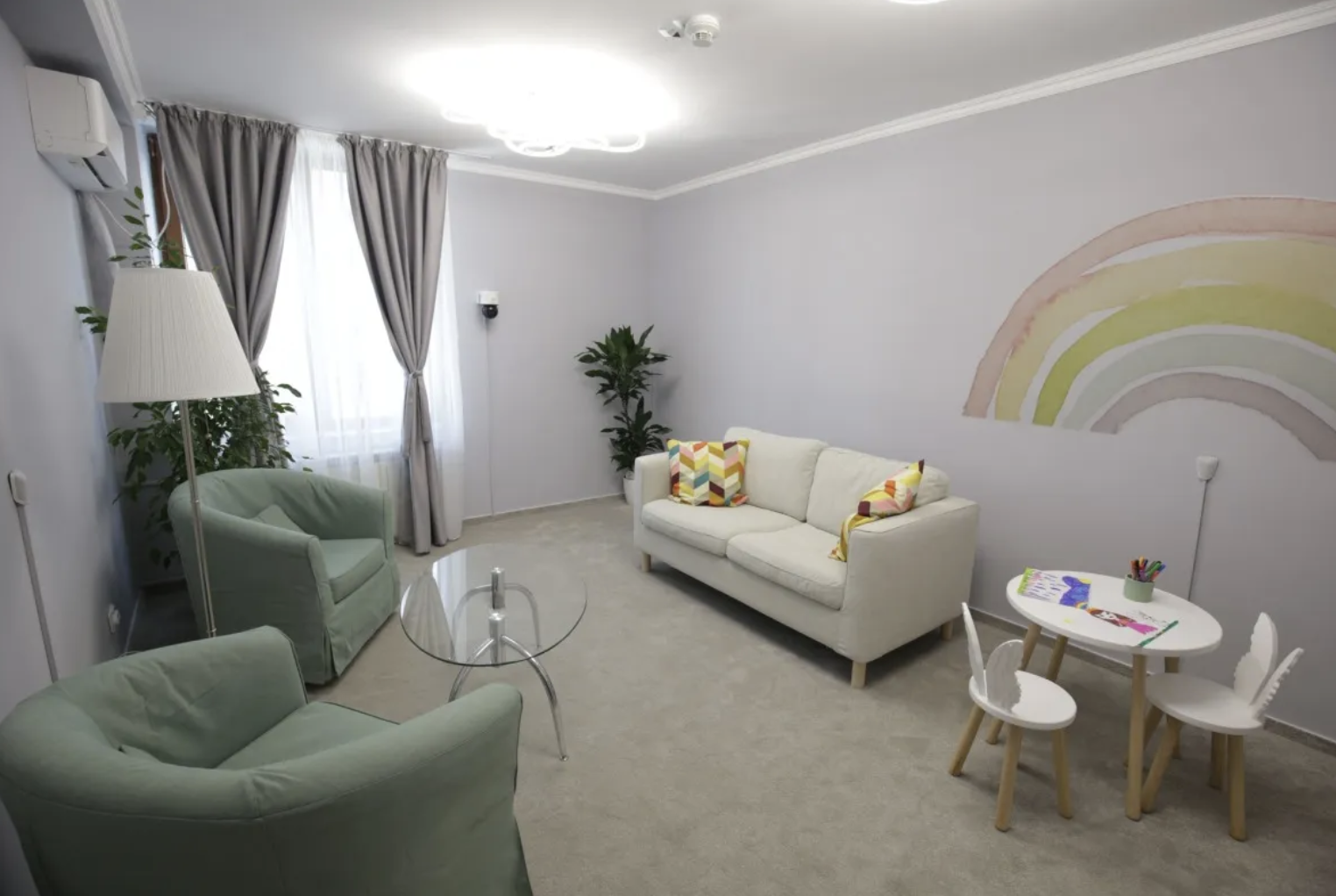CFS Examples
Child Protection, Service Providers
Examples of how child-friendly spaces can be utilized by child protection practitioners and service providers include providing a safe, calm, and comfortable environment for children and adolescents to wait for appointments, to conduct initial conversations or screening interviews, and to provide assistance and services.
Costa Rica
The Warnath Group has designed multiple child-friendly spaces for practitioners from the National Child Welfare Agency (PANI) in Costa Rica to meet with possible child and adolescent trafficking victims to conduct screening interviews and to be used in the provision of services. These child-friendly spaces were developed in partnership with the U.S. and Costa Rican governments as part of the Innovations in Addressing Child Trafficking Program (IACT).
“Child-friendly spaces play an important role in the protection of child and adolescent trafficking victims. They are critical to support trauma-informed initial interactions with and screening of presumed child and adolescent trafficking victims. Conducting victim identification and providing support in a child-friendly space, with trained and sensitized practitioners and according to established standards, is key in creating a sense of safety that can lead to disclosure of harm and ensure the protection of vulnerable children and adolescents.”

Jamaica
Warnath Group partnered with the U.S. and Jamaican governments to establish four child-friendly spaces managed by the Ministry of Health and Wellness, the Child Protection and Family Services Agency (CPFSA), and the Jamaica Constabulary Force’s anti-trafficking unit in Jamaica.
“Child-friendly spaces are designed to make children feel comfortable and relaxed in a colorful and playful environment…we interact with children on a daily basis and in woring in child-friendly spaces it will help our counselors and our social workers to better engage with our children in a more friendly and relaxed environment.”
Costa Rica
This tailored adolescent waiting area (“Zona Adolescente” or “Teen Zone”) was specifically designed by the Warnath Group for older children who are waiting for appointments at the National Child Welfare Agency (PANI) Office in the canton of Santa Cruz, Costa Rica. The design provides privacy from the general waiting area but is located to allow for supervision and safety. This child-friendly space was developed in partnership with the U.S. and Costa Rican governments as part of the Innovations in Addressing Child Trafficking Program (IACT).

Australia
This child-friendly waiting area is for children who are waiting to receive services or participate in programs at a child welfare organization.
“We want to design a space where visitors can feel safe and not feel ‘in the way’. In traditional waiting rooms, you are one person in the middle of many people coming and going. The space we’re aiming for will contain enough privacy to make people feel that they actually mean something.”

Healthcare Professionals
Examples of how child-friendly spaces can be utilized by healthcare professionals include providing a safe, calm, and comfortable environment for children and adolescents to wait for appointments, to conduct initial conversations or screening interviews, and to provide physiological and psychological care.
United Kingdom
In the United Kingdom, Art In Site is working with hospitals to create child-friendly spaces.
“How we feel in hospitals can affect us for life. Art and design might not be first-line treatments, but their presence in caring spaces can have a bearing on long-term health outcomes. Artwork is often a crucial point of memory – and it really matters if you can take positive memories along with you from a hospital visit.”

United States
At the Children’s Hospital of Michigan in Detroit, an initiative called Imagination Destinations is creating child-friendly MRI rooms.
“Having an environment that feels like a safe space gives parents a sense of relief. I have talked to some parents who have been coming to the hospital before the room wraps, and they feel it made a difference in their child’s care now that they’re coming into a room that is more child-friendly. It takes away from it being just a hospital room.”

Law Enforcement
Examples of how child-friendly spaces can be utilized by law enforcement include providing a safe, calm, and comfortable environment for children and adolescents in the criminal justice system (for example, children or adolescents who have been identified as a victim of a crime, who have been arrested or detained, or who are visiting an incarcerated family member) and to conduct investigative interviews.
Jamaica
Warnath Group partnered with the U.S. and Jamaican governments to establish a child-friendly space at the police station in Falmouth, Jamaica where children can interact with law enforcement and service providers after a crime occurs. This child-friendly space was developed under the U.S.-Jamaica Child Protection Compact, an initiative of both governments to address child trafficking in Jamaica.
“This space is a one-stop shop where a child will be taken care of after a crime.“
Jamaica
Warnath Group partnered with Jamaica’s Independent Commission of Investigations (INDECOM) to establish child-friendly spaces at INDECOM locations in Kingston and Montego Bay, Jamaica. These child-friendly spaces were developed under the U.S.-Jamaica Child Protection Compact, an initiative of both governments to address child trafficking in Jamaica. These child-friendly spaces are used to conduct investigative interviews.
“Child-friendly spaces send an unmistakable message that we all care about and are truly invested in the well-being of child trafficking victims and victims of other crimes.”
United States
Dawson Place Child Advocacy Center is a safe place where abused children and non-offending family members can come for safety, justice, and healing. At one central location, victims of child abuse can find compassionate people who will listen, advocates to help navigate services and be informed, medical and mental health professionals, and professional law enforcement support.
Dawson Place is an accredited Children’s Advocacy Center (CAC) – learn more about the CAC Model from the United States National Children’s Alliance.
United States
This early literacy play space is part of the waiting room at the Cook County Jail in Illinois, where children wait to visit incarcerated family members. Children with an incarcerated parent are at risk of having lower educational achievements, and often experience mental distress, so this space is intended to mitigate negative experiences by allowing children to maintain a positive connection with their incarcerated loved one.
“When you walk into the lobby of visitation, it no longer signals hopelessness; it signals connection, and the impact of that is not just for the children, but also for the individuals who are incarcerated.”

Cambodia
Action Pour Les Enfants (APLE Cambodia), and the Kampot Anti-Human Trafficking and Juvenile Protection Unit established this child-friendly interview room at the provincial police headquarters for interviewing children and adolescents who are involved in cases of sexual abuse and exploitation.
“One of the greatest assets of the child-friendly room initiative is its creativity as well as its promotion of a culture of partnership between police officials, the child victims and witnesses. In provinces where such rooms have been set up, they have established positive interactions and built trust between the parties involved.”

Uganda
This space for interviewing child and adolescent victims of violence was constructed in a shipping container to address space and resource limitations.
“The typical police interview room is lit by overhead florescent lighting and furnished with a bare, table and straight-backed office chairs. In contrast, the new survivor-friendly interview rooms are designed to help clients feel safe and comfortable with carpeting, overstuffed furniture, and soft lighting.”

Prosecutors, Judges
Examples of how child-friendly spaces can be utilized by legal professionals include providing a safe, calm, and comfortable environment for children and adolescents in the criminal justice system, including while waiting at prosecutor offices or at court, during investigative interviews, and while providing testimony as victim-witnesses.
South Africa
The Gqeberha High Court renovated its waiting and intermediary rooms to create safe spaces for children and adolescents who have to testify in criminal cases. The intermediary space, where witnesses testify without having to face the alleged perpetrator, was redesigned to use warm color tones recommended by a practicing psychologist. The waiting room was redesigned to include play-therapy and educational items, as well as children’s books to read, and age-appropriate videos to watch before going in front of the judge. The waiting room is also used for consults with children on days the court is not in session.
“The transformation of these spaces from functional areas to inviting, child-friendly rooms is a crucial stride towards respecting and protecting the human rights of children, especially those experiencing trauma. It ensures that children’s voices are heard and valued within our justice system.”

Georgia
The Rustavi Police Department, Regional Prosecutor’s Office, Legal Aid Bureau, and City Court were selected as the first places in Georgia to pilot a child-friendly environment concept. The aim of this concept was to create a judicial system more aligned with children’s specific needs, that facilitates child participation, ensures privacy and prevents revictimization. The rooms provide a safe space where legal professionals can assist children throughout the legal process and ensure that children are treated in the same way at each of the four institutions.
“This room, I think, significantly changes the situation. Here in an informal environment, the child communicates with a professional who is specialized and trained in communication skills. This environment is less stressful, coloured in neutral tones, and arranged so as not to distract the child’s attention.”
United States
The Centre County Courthouse in Bellefonte, Pennsylvania developed a conference room into a dedicated child-friendly waiting area for children and adolescents who have to testify in court. Previously, children and adolescents had to wait in the hallways where they were at risk of encountering perpetrators and their associates. The new children’s waiting room is just a short walk from the courtroom for when judges need to bring children in to give testimony.
“…there really is a general recognition that having a calm, child-friendly environment can help reduce anxiety, it makes the process less traumatic for them, and overall, more effective in terms of the court process.”

Romania
The Bucharest Prosecutor’s Office developed this child-friendly space for prosecutors to conduct forensic interviews with children and adolescents. Prosecutors in this child-friendly space utilize the NICHD protocol for interviews, which is a research-based method that helps children to recall and tell the most painful stories of their lives in a way that makes them feel safe and listened to. Prosecutors and judges in the countries that have adopted the use of the NICHD protocol believe it allows them to obtain important details of a crime and improve the chances that the perpetrators are found and sentenced.
“Prosecutors from Bucharest’s special team say that unlike other crimes, where evidence can take the form of witness statements and audio or video recordings, in the case of child sexual abuse the victim’s statement is the crucial evidence. And to obtain such a statement requires not only the physical infrastructure of the special interview rooms but also human infrastructure: prosecutors trained to interview under the NICHD protocol. This method helps them to relate and build a safe relationship with the child in order to get important details about their abuse story.”

Suggest an example for inclusion.

A child-friendly space (CFS) is an environment designed to help children feel safe, calm, and comfortable while they are interacting with practitioners.
A child-friendly space is about more than just the physical space. It is about how children and adolescents feel when they are in this space. This requires professional and skilled staff who uphold standards of care and ensure sustainability over time.
This website from the Warnath Group provides information to support the development, improvement, and maintenance of child-friendly spaces, specifically in the protection of child and adolescent trafficking victims.